An Online-Based Edu-Escape Room: A Comparison Study of a Multidimensional Domain of PSTs with Flipped Sustainability-STEM Contents
Abstract
1. Introduction
2. Materials and Methods
2.1. Sample and Instruments
2.2. Course Context and Procedure
2.3. Online-Based Edu-Escape Room Design
2.4. Data Analysis
3. Results and Discussion
3.1. Comparative Analysis of Survey Questionnaires
3.2. Effect-Size (ES) and Principal Component Analysis (PCA) Analysis
3.3. SEM-PLS Data Analysis
3.4. Discussions
4. Conclusions
Author Contributions
Funding
Institutional Review Board Statement
Informed Consent Statement
Data Availability Statement
Conflicts of Interest
References
- Legaki, N.Z.; Xi, N.; Karpouzis, K.; Assimakopoulos, V. The effect of challenge-based gamification on learning: An experiment in the context of statistics education. Int. J. Hum. Comput. Stud. 2020, 144, 102496. [Google Scholar] [CrossRef] [PubMed]
- Nicholson, S. Peeking Behind the Locked Door: A Survey of Escape Room Facilities. White Paper. 2015. Available online: http://scottnicholson.com/pubs/erfacwhite.pdf (accessed on 22 November 2020).
- Vázquez, A.; Manassero, M.A. Juegos para enseñar la naturaleza del conocimiento científico y tecnológico. Educar 2017, 53, 149–170. [Google Scholar] [CrossRef]
- Deterding, S.; Dixon, D.; Khaled, R.; Nacke, L. From game design elements to gamefulness: Defining “gamification. In Proceedings of the 15th International Academic MindTrek Conference: Envisioning Future Media Environments, Tampere, Finland, 29–30 September 2011; pp. 9–15. [Google Scholar]
- González, C.S. Estrategias para trabajar la creatividad en la Educación Superior: Pensamiento de diseño, aprendizaje basado en juegos y en proyectos. RED 2014, 40, 1–15. [Google Scholar]
- Su, C.H. The Effect of Users’ Behavioral intention on gamification augmented reality in STEM (GAR-STEM) education. J. Balt. Sci. Educ. 2019, 18, 450. [Google Scholar] [CrossRef]
- Zamora-Polo, F.; Corrales-Serrano, M.; Sánchez-Martín, J.; Espejo-Antúnez, L. Nonscientific University Students Training in General Science Using an Active-Learning Merged Pedagogy: Gamification in a Flipped Classroom. Educ. Sci. 2019, 9, 297. [Google Scholar] [CrossRef]
- Pérez-Vázquez, E.; Gilabert-Cerdá, A.; Lledó-Carreres, A. Gamificación en la educación universitaria: El uso del escape room como estrategia de aprendizaje. In Investigación e innovación en la Enseñanza Superior: Nuevos Contextos, Nuevas Ideas; Octaedro: Barcelona, Spain, 2019; pp. 660–668. [Google Scholar]
- Sierra, M.C.; Fernández-Sánchez, M.R. Gamificando el aula universitaria. Análisis de una experiencia de Escape Room en educación superior. REXE 2019, 18, 105–115. [Google Scholar] [CrossRef]
- Nicholson, S. Creating engaging escape rooms for the classroom. Child. Educ. 2018, 94, 44–49. [Google Scholar] [CrossRef]
- Borrego, C.; Fernández, C.; Blanes, I.; Robles, S. Room escape at class: Escape games activities to facilitate the motivation and learning in computer science. JOTSE 2017, 7, 162–171. [Google Scholar] [CrossRef]
- Gómez-Urquiza, J.L.; Gómez-Salgado, J.; Albendín-García, L.; Correa-Rodríguez, M.; González-Jiménez, E.; Cañadas-De la Fuente, G.A. The impact on nursing students’ opinions and motivation of using a “Nursing Escape Room” as a teaching game: A descriptive study. Nurse Educ. Today 2019, 72, 73–76. [Google Scholar] [CrossRef]
- Brown, N.; Darby, W.; Coronel, H. An escape room as a simulation teaching strategy. Clin. Simul. Nurs. 2019, 30, 1–6. [Google Scholar] [CrossRef]
- Sánchez-Martín, J.; Corrales-Serrano, M.; Luque-Sendra, A.; Zamora-Polo, F. Exit for success. Gamifying science and technology for university students using escape-room. A preliminary approach. Heliyon 2020, 6, 04340. [Google Scholar] [CrossRef] [PubMed]
- Miller, K.; Sonnert, G.; Sadler, P. The influence of students’ participation in STEM competitions on their interest in STEM careers. Int. J. Sci. Educ. 2018, 8, 95–114. [Google Scholar] [CrossRef]
- González-Gómez, D.; Airado Rodríguez, D.; Cañada-Cañada, F.; Jeong, J.S. A comprehensive application to assist in acid-base titration self-learning: An approach for high school and undergraduate students. J. Chem. Educ. 2015, 5, 855–863. [Google Scholar] [CrossRef]
- UNESCO. UN Decade of Education for Sustainable Development, 2005–2014: The DESD at a Glance; UNESDOC: New York, NY, USA, 2005. [Google Scholar]
- Pavlova, M. Teaching and learning for sustainable development: ESD research in technology education. Int. J. Technol. Des. Educ. 2013, 23, 733–748. [Google Scholar] [CrossRef]
- UNESCO. UNESCO Moving Forward the 2030 Agenda for Sustainable Development; UNESDOC: New York, NY, USA, 2017. [Google Scholar]
- Sterling, S. Sustainable Education: Re-Visioning Learning and Change. Schumacher Briefings; ERIC: Bristol, UK, 2001. [Google Scholar]
- Jeong, J.S.; González-Gómez, D. A web-based tool framing a collective method for optimizing the location of a renewable energy facility and its possible application to sustainable STEM education. J. Clean. Prod. 2020, 251, 119747. [Google Scholar] [CrossRef]
- Wiswall, M.; Stiefel, L.; Schwartz, A.E.; Boccardo, J. Does attending a STEM high school improve student performance? Evidence from New York City. Econ. Educ. Rev. 2014, 40, 93–105. [Google Scholar] [CrossRef]
- Osborne, J.; Dillon, J. Science Education in Europe: Critical Reflections; The Nuffield Foundation: London, UK, 2008. [Google Scholar]
- Vázquez, A.; Manassero, M.A. El descenso de las actitudes hacia la ciencia de chicos y chicas en la educación obligatoria. Ciênc. Educ. 2011, 17, 249–268. [Google Scholar] [CrossRef][Green Version]
- Tai, R.; Liu, C.; Maltese, A.; Fan, X. Planning early for careers in science. Science 2006, 312, 1143–1144. [Google Scholar] [CrossRef]
- Garritz, A. Personal Reflection: Pedagogical Content Knowledge and the Affective domain of Scholarship of Teaching and Learning. IJSOTL 2010, 4, 26. [Google Scholar] [CrossRef]
- Itzek-Greulich, H.; Vollmer, C. Emotional and motivational outcomes of lab work in the secondary intermediate track: The contribution of a science center outreach lab. J. Res. Sci. Teach. 2017, 54, 3–28. [Google Scholar] [CrossRef]
- Koballa, T.R.; Bradbury, L.U.; Glynn, S.M.; Deaton, C.M. Conceptions of science teacher mentoring and mentoring practice in an alternative certification program. J. Sci. Teach. Educ. 2008, 19, 391–411. [Google Scholar] [CrossRef]
- Pekrun, R.; Muis, K.R.; Frenzel, A.C.; Goetz, T. Emotions at School; Routledge: New York, NY, USA, 2017. [Google Scholar]
- Vázquez, A.; Manassero, M.A. En defensa de las actitudes y emociones en la educación científica (I): Evidencias y argumentos generales (In defense of attitudes and emotions in science education (I): General arguments and evidence). REurEDC 2007, 4, 247–271. [Google Scholar]
- Clauson, A.; Hahn, L.; Frame, T.; Hagan, A.; Bynum, L.A.; Thompson, M.E.; Kiningham, K. An innovative escape room activity to assess student readiness for advanced pharmacy practice experiences (APPEs). Curr. Pharm. Teach. Learn. 2019, 11, 723–728. [Google Scholar] [CrossRef] [PubMed]
- Schlegel, R.J.; Chu, S.L.; Chen, K.; Deuermeyer, E.; Christy, A.G.; Quek, F. Making in the classroom: Longitudinal evidence of increases in self-efficacy and STEM possible selves over time. Comput. Educ. 2019, 142, 103637. [Google Scholar] [CrossRef]
- Bandura, A. Self-efficacy. Corsini Encycl. Psychol. 2010, 1–3. [Google Scholar] [CrossRef]
- Katsantonis, I.G. Investigation of the Impact of School Climate and Teachers’ Self-Efficacy on Job Satisfaction: A Cross-Cultural Approach. Eur. J. Investig. Health Psychol. Educ. 2020, 10, 119–133. [Google Scholar] [CrossRef]
- Namaziandost, E.; Çakmak, F. An account of EFL learners’ self-efficacy and gender in the Flipped Classroom Model. Educ. Inf. Technol. 2020, 25, 4041–4055. [Google Scholar] [CrossRef]
- Kazempour, M.S. I can’t teach science! A case study of an elementary pre-service teacher’s intersection of science experiences, beliefs, attitude, and self-efficacy. Int. J. Environ. Sci. Educ. 2014, 9, 77–96. [Google Scholar]
- Kurniawan, D.A.; Astalini, A.; Darmaji, D.; Melsayanti, R. Students’ Attitude towards Natural Sciences. Int. J. Eval. Res. Educ. 2019, 8, 455–460. [Google Scholar] [CrossRef]
- Fernández-Cézar, R.; Garrido, D.; Solano-Pinto, N. Do Science, Technology, Engineering and Mathematics (STEM) experimentation outreach programs affect attitudes towards mathematics and science? A quasi-experiment in primary education. Mathematics 2020, 8, 1490. [Google Scholar] [CrossRef]
- Jeong, J.S.; González-Gómez, D.; Cañada-Cañada, F. How does a flipped classroom course affect the affective domain toward science course? Interact. Learn. Environ. 2019, 1–13. [Google Scholar] [CrossRef]
- Schruba, A.E. Evaluation of Student Attitude toward Science and Self-Efficacy in a Non-Majors College Biology Course; Texas Christian University: Fort Worth, TX, USA, 2008. [Google Scholar]
- Jeong, J.S.; González-Gómez, D.; Conde-Núñez, C.; Gallego-Picó, A. Examination of students’ engagement with R-SPQ-2F of learning approach in flipped sustainable science course. J. Balt. Sci. Educ. 2019, 18, 880–891. [Google Scholar] [CrossRef]
- Bleicher, R.E. Revisiting the STEBI-B: Measuring self-efficacy in preservice elementary teachers. School Sci. Math. 2004, 104, 383–391. [Google Scholar] [CrossRef]
- González-Gómez, D.; Jeong, J.S. Examining the Effect of an Online Formative Assessment Tool (OFAT) of Students’ Motivation and Achievement for a University Science Education. J. Balt. Sci. Educ. 2020, 19, 401–414. [Google Scholar] [CrossRef]
- Jeong, J.S.; González-Gómez, D.; Yllana-Prieto, F. Sustainable and Flipped STEM Education: Formative Assessment Online Interface for Observing Pre-Service Teachers’ Performance and Motivation. Educ. Sci. 2020, 10, 283. [Google Scholar] [CrossRef]
- Dunbar, R.L.; Dingel, M.J.; Dame, L.F.; Winchip, J.; Petzold, A.L. Student social self-efficacy, leadership status, and academic performance in collaborative learning environments. Stud. High. Educ. 2016, 38, 1507–1523. [Google Scholar] [CrossRef]
- Harmon-Jones, C.; Bastian, B.; Harmon-Jones, E. The discrete emotions questionnaire: A new tool for measuring state self-reported emotions. PLoS ONE 2016, 11, e0159915. [Google Scholar] [CrossRef]
- Bisquerra, R. Emotional Education and Well-Being; Praxis: Barcelona, Spain, 2005. [Google Scholar]
- Etxeberria, J.; Tejedor, F.J. Descriptive data analysis in education. La Muralla Madrid 2005, 11, 1–12. [Google Scholar]
- Jeong, J.S.; González-Gómez, D.; Cañada-Cañada, F. Students’ Perceptions and Emotions toward Learning in a Flipped General Science Classroom. J. Sci. Educ. Technol. 2016, 25, 747–758. [Google Scholar] [CrossRef]
- Kelley, K.; Preacher, K.J. On effect size. Psychol. Methods 2012, 17, 137–152. [Google Scholar] [CrossRef]
- Rhea, M.R. Determining the magnitude of treatment effects in strength training research through the use of the effect size. J. Strength Cond. Res. 2004, 18, 918–920. [Google Scholar] [PubMed]
- Fritz, C.O.; Morris, P.E.; Richler, J.J. Effect size estimates: Current use, calculations, and interpretation. J. Exp. Psychol. Gen. 2012, 141, 2–18. [Google Scholar] [CrossRef] [PubMed]
- Cohen, J. Statistical Power Analysis for the Behavioral Sciences (2. Auflage); Erlbaum: Hillsdale, NJ, USA, 1988. [Google Scholar]
- Jeong, J.S.; González-Gómez, D. Adapting to PSTs’ pedagogical changes in sustainable mathematics education through flipped E-Learning: Ranking its criteria with MCDA/F-DEMATEL. Mathematics 2020, 8, 858. [Google Scholar] [CrossRef]
- Peres-Neto, P.R.; Jackson, D.A.; Somers, K.M. How many principal components? Stopping rules for determining the number of non-trivial axes revisited. Comput. Stat. Data Anal. 2005, 49, 974–997. [Google Scholar] [CrossRef]
- González-Gómez, D.; Jeong, J.S.; Cañada-Cañada, F. Enhancing science self-efficacy and attitudes of Pre-Service Teachers (PST) through a flipped classroom learning environment. Interact. Learn. Environ. 2019, 1–12. [Google Scholar] [CrossRef]
- Arango-Morales, A.J.; Delgado-Cruz, A.; Tamayo-Salcedo, A.L. Digital Competence of Tourism Students: Explanatory Power of Professional Training. Eur. J. Investig. Health Psychol. Educ. 2020, 10, 310–326. [Google Scholar] [CrossRef]
- Brown, S.D.; Tramayne, S.; Hoxha, D.; Telander, K.; Fan, X.; Lent, R.W. Social cognitive predictors of college students’ academic performance and persistence: A meta-analytic path analysis. J. Vocat. Behav. 2008, 72, 298–308. [Google Scholar] [CrossRef]
- Jeong, J.S.; González-Gómez, D.; Gallego-Picó, A.; Bravo, J.C. Effects of active learning methodologies on the students’ emotions, self-efficacy beliefs and learning outcomes in a science distance learning course. JOTSE 2019, 9, 217–227. [Google Scholar] [CrossRef]
- Van Aalderen-Smeets, S.I.; Van der Molen, J.H.W. Improving primary teacher’ attitudes toward science by attitude-focused professional development. J. Res. Sci. Teach. 2015, 52, 710–734. [Google Scholar] [CrossRef]
- González-Gómez, D.; Jeong, J.S.; Gallego, A.; Cañada-Cañada, F. Influencia de la metodología flipped en las emociones sentidas por estudiantes del Grado de Educación Primaria en clases de ciencias dependiendo del bachillerato cursado. Educ. Química 2018, 29, 77–88. [Google Scholar]
- Arkorful, V.; Abaidoo, N. The role of e-learning, advantages and disadvantages of its adoption in higher education. Int. J. Instr. Technol. Distance Learn. 2015, 12, 29–42. [Google Scholar]
- Cobley, S.; Baker, J.; Wattie, N.; McKenna, J. Annual age-grouping and athlete development: A meta-analytical review of relative age effects in sport. Sports Med. 2009, 39, 235–256. [Google Scholar] [CrossRef] [PubMed]
- Navarro, J.J.; García-Rubio, J.; Olivares, P.R. The Relative Age Effect and its Influence on Academic Performance. PLoS ONE 2015, 10, e0141895. [Google Scholar] [CrossRef] [PubMed]
- Muis, K.R.; Pekrun, R.; Sinatra, G.M.; Azevedo, R.; Trevors, G.; Meier, E.; Heddy, B.C. The curious case of climate change: Testing a theoretical model of epistemic beliefs, epistemic emotions, and complex learning. Learn. Instr. 2015, 39, 168–183. [Google Scholar] [CrossRef]
- Carruthers, P. Are epistemic emotions metacognitive? Philos. Psychol. 2017, 30, 58–78. [Google Scholar] [CrossRef]
- Rowe, A.D.; Fitness, J. Understanding the role of negative emotions in adult learning and achievement: A social functional perspective. Behav. Sci. 2018, 8, 27. [Google Scholar] [CrossRef]
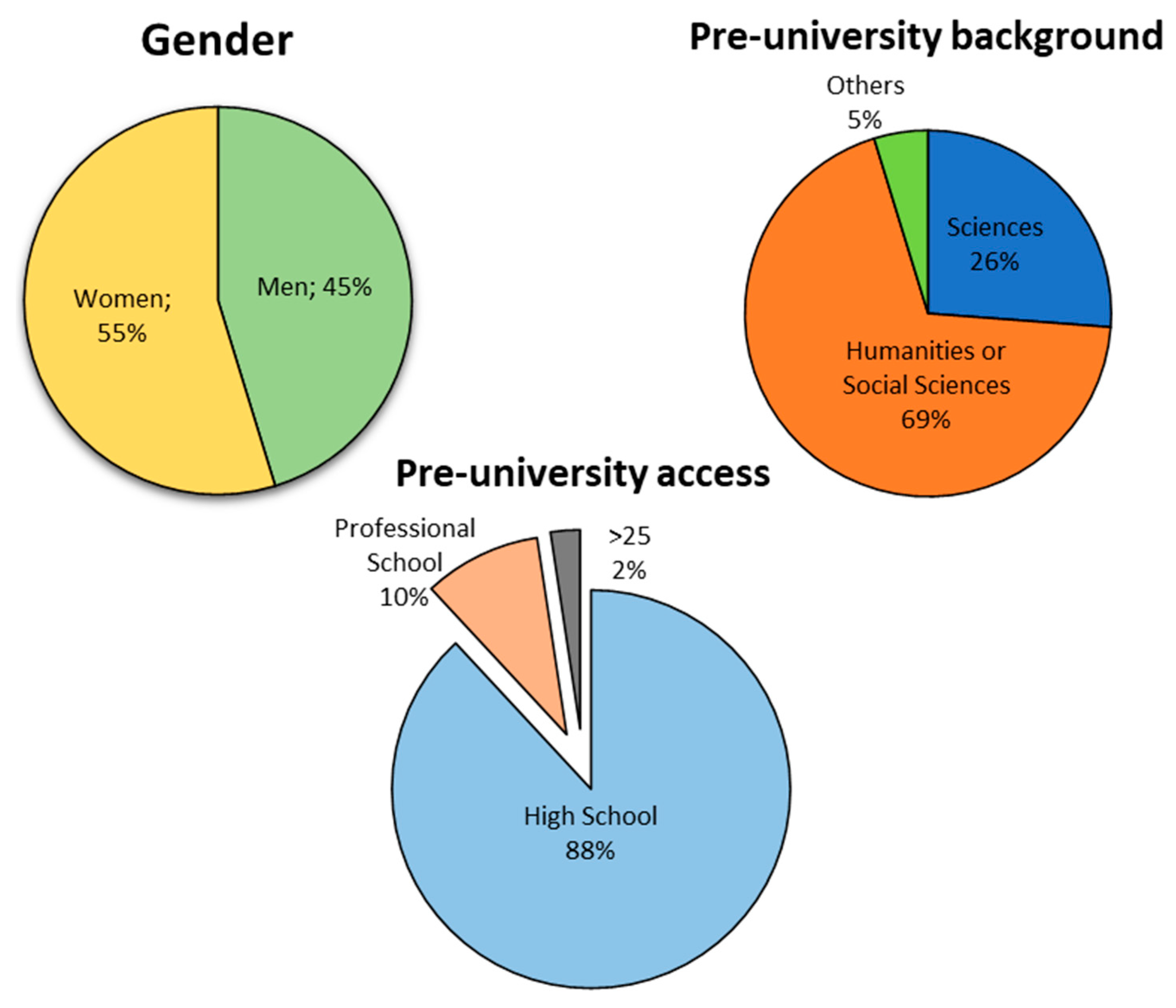
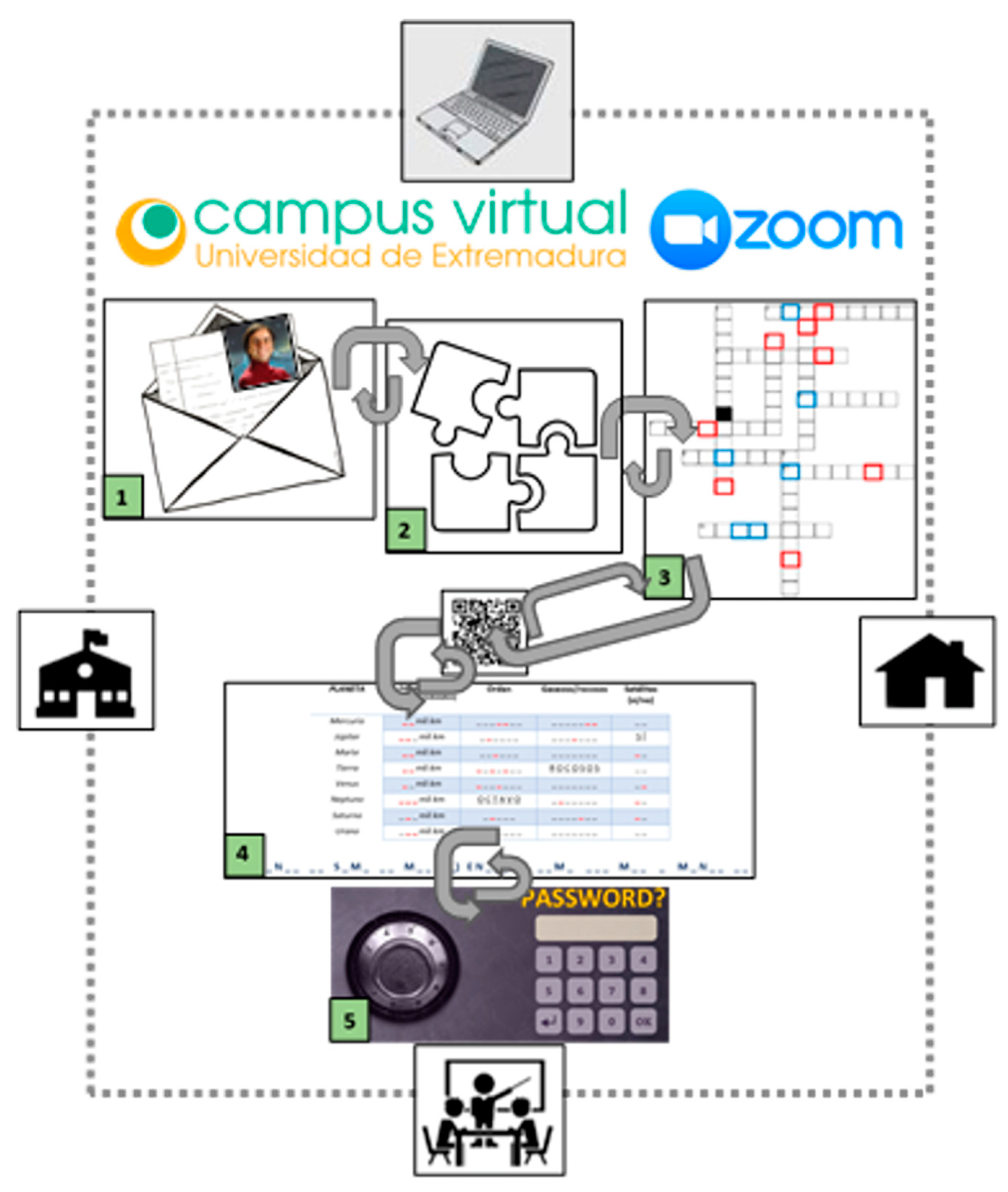
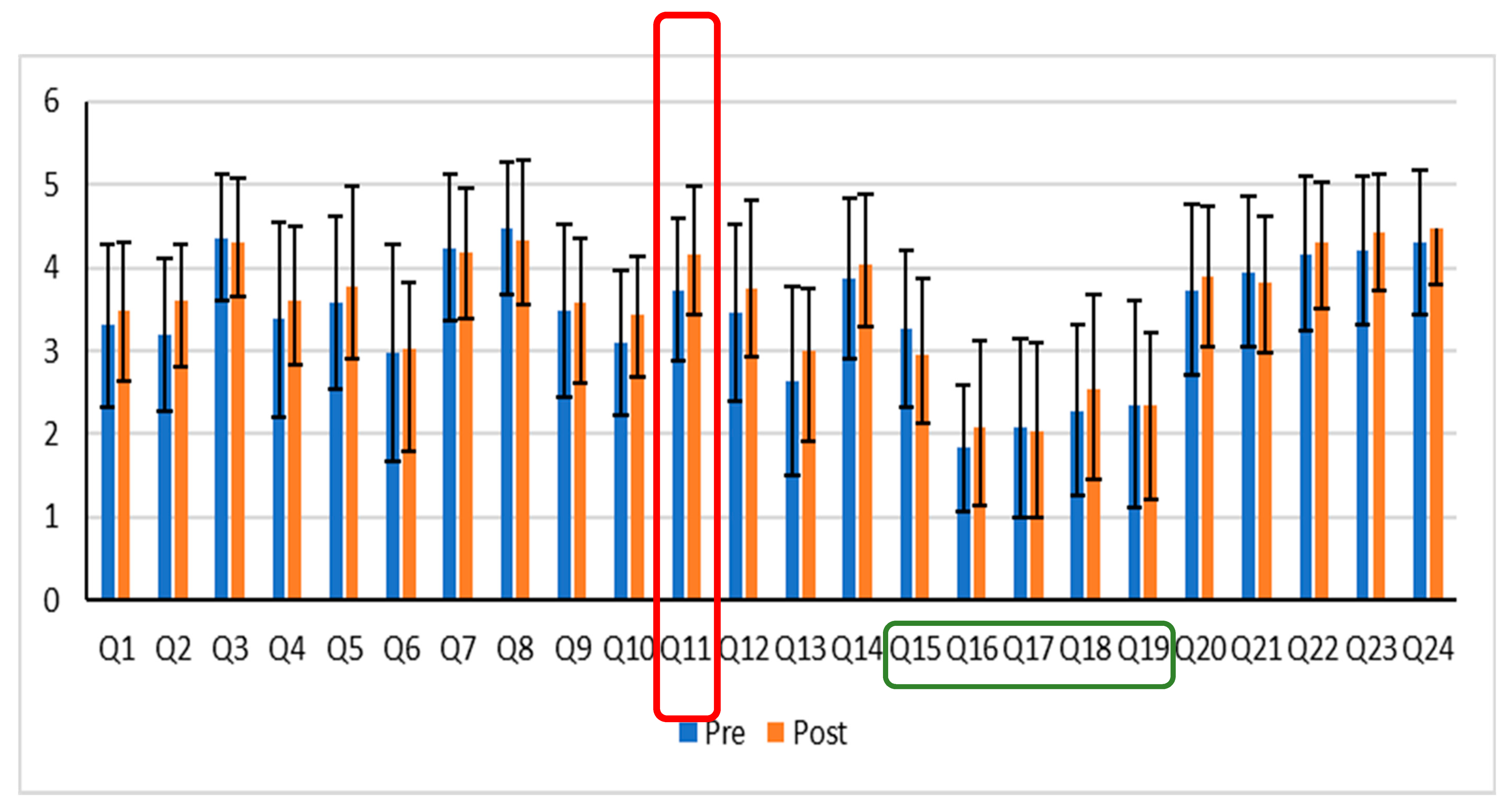
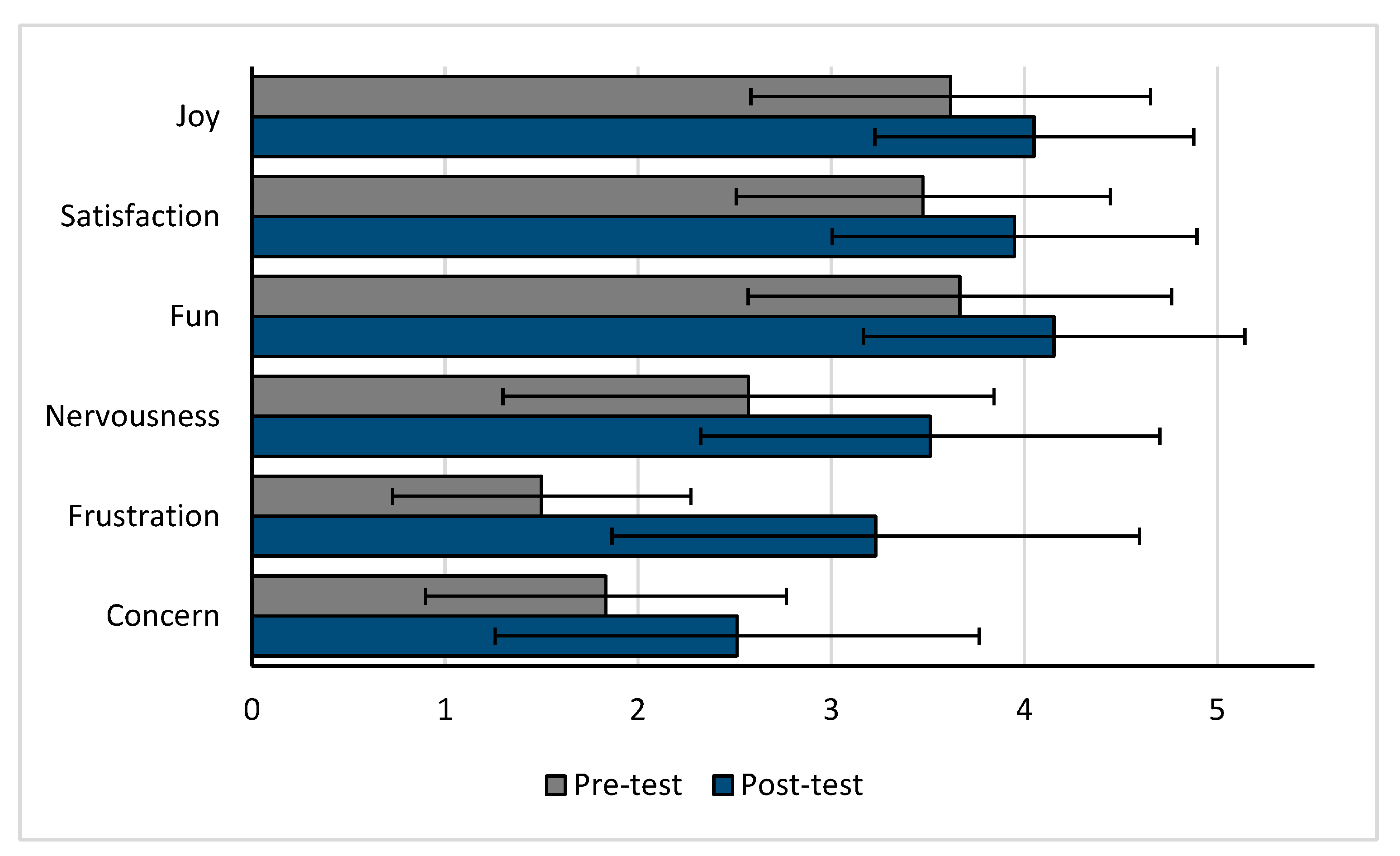

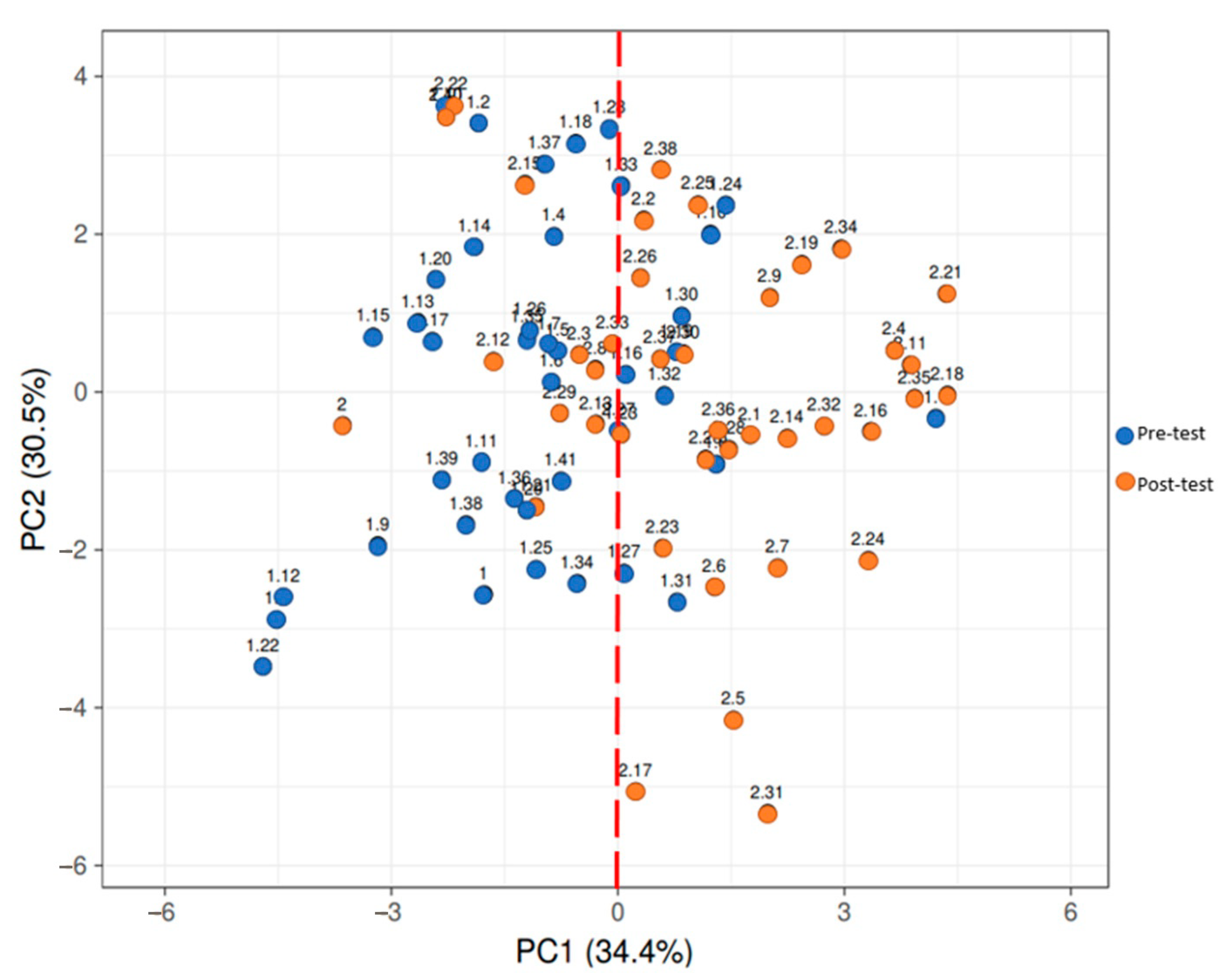
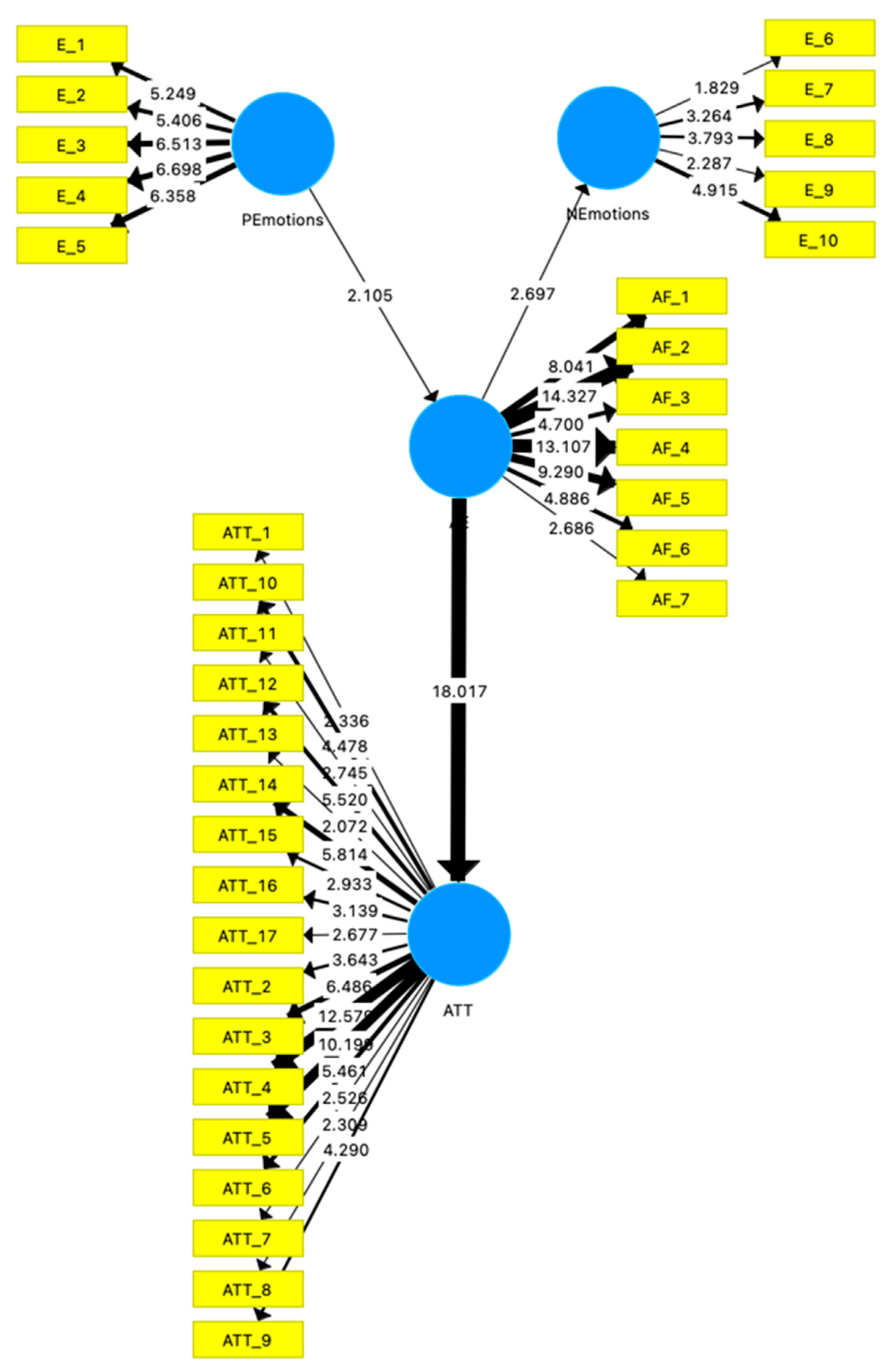
| Questionnaire | |
|---|---|
| Attitude and Self-Efficacy Items | |
| Q1. I understand scientific concepts well enough to teach science at lower educational levels. (AF_1) | |
| Q2. I am typically able to answer students’ science questions. (AF_2) | |
| Q3. Even though I try very hard, I do not teach science as well as I teach most subjects. (AF_3) | |
| Q4. I believe I have the required skills to teach scientific content. (AF_4) | |
| Q5. I will be very effective in monitoring science experiments. (AF_5) | |
| Q6. Science subjects have always been my favorites. (AF_6) | |
| Q7. Science is useful for solving problems. (AF_7) | |
| Q8. Doing laboratory activities is fun. (ATT_1) | |
| Q9. It is important to know about science to get a good job. (ATT_2) | |
| Q10. I know the steps necessary to teach science concepts effectively. (ATT_3) | |
| Q11. I like the challenges of scientific activities. (ATT_4) | |
| Q12. I am comfortable in science class. (ATT_5) | |
| Q13. Science is easy for me. (ATT_6) | |
| Q14. The inadequacy of a student’s science background can be overcome by appropriate teaching. (ATT_7) | |
| Q15. I find it difficult to explain a science concept to students. (ATT_8) | |
| Q16. No matter how hard I try, I cannot learn science. (ATT_9) | |
| Q17. When I hear the word “science”, I feel a sense of inconvenience. (ATT_10) | |
| Q18. I feel that I am not able to teach science properly. (ATT_11) | |
| Q19. I often think, “I cannot do this”, when a science assignment seems hard. (ATT_12) | |
| Q20. I am interested in the Universe as a science subject. (ATT_13) | |
| Q21. I find the mathematical concepts of density, weight, mass, volume, distance, radius and diameter useful. (ATT_14) | |
| Q22. I am interested in gamification as a science teaching methodology. (ATT_15) | |
| Q23. I am interested in Escape Rooms as a science teaching tool. (ATT_16) | |
| Q24. I am interested in making an Escape Room about the Universe as a science subject. (ATT_17) | |
| Emotion Items | |
| Positive emotion | Negative emotion |
| Joy (E_1) | Nervousness (E_6) |
| Satisfaction (E_2) | Frustration (E_7) |
| Enthusiasm (E_3) | Uncertainty (E_8) |
| Fun (E_4) | Concern (E_9) |
| Confidence (E_5) | Boredom (E_10) |
| Knowledge of the Natural Environment in Primary Education | ||||
|---|---|---|---|---|
| General course contents | Study of the natural environment, problem-solving and practical work in the classroom and laboratory, cultural value of science, didactic projection of the relationship between science, technology and society, didactic units in the classroom, resources and didactic materials, interdisciplinarity in the teaching/learning of science, and special educational needs in science teaching/learning. | |||
| Course structure | Topics | Contents | ||
| T1. Current challenges in science education. | Didactic projection of science, technology and society. Scientific education and transversal topics. Interdisciplinarity in science teaching-learning. | |||
| T2. Learning to teach science in primary school through different strategies. | School research, natural environment trips, problem-solving, practical work and project work. | |||
| T3. Contents of science education for the primary education stage. Projects on the curriculum of the knowledge of the natural environment in primary education. Resources and didactic materials. | Teaching-learning activities: the environment and its conservation, the diversity of living beings, health and personal development, matter and energy, sources of renewable energies, technology, sustainable education, environmental education and objects, and machines. | |||
| Course duration (150 h) | Face-to-face class (45 h) | Practical activities (15 h) | Non-presential activity (90 h) | |
| Cronbach Alpha Test | |
|---|---|
| Questionnaire | Value |
| Attitudes and self-efficacy | 0.82 * |
| Emotions | 0.76 * |
| Effect Size (ES) | |||
|---|---|---|---|
| Variable | p-Value (Mann-Whitney Test) | ES Value (Cohen’s d) | ES |
| Q11 | 0.031 | 0.5 | Medium |
| Joy | 0.047 | 0.5 | Medium |
| Satisfaction | 0.015 | 0.5 | Medium |
| Fun | 0.034 | 0.5 | Medium |
| Nervousness | 0.001 | 0.7 | Medium |
| Frustration | 0.000 | 1.6 | Large |
| Concern | 0.012 | 0.6 | Medium |
Publisher’s Note: MDPI stays neutral with regard to jurisdictional claims in published maps and institutional affiliations. |
© 2021 by the authors. Licensee MDPI, Basel, Switzerland. This article is an open access article distributed under the terms and conditions of the Creative Commons Attribution (CC BY) license (http://creativecommons.org/licenses/by/4.0/).
Share and Cite
Yllana-Prieto, F.; Jeong, J.S.; González-Gómez, D. An Online-Based Edu-Escape Room: A Comparison Study of a Multidimensional Domain of PSTs with Flipped Sustainability-STEM Contents. Sustainability 2021, 13, 1032. https://doi.org/10.3390/su13031032
Yllana-Prieto F, Jeong JS, González-Gómez D. An Online-Based Edu-Escape Room: A Comparison Study of a Multidimensional Domain of PSTs with Flipped Sustainability-STEM Contents. Sustainability. 2021; 13(3):1032. https://doi.org/10.3390/su13031032
Chicago/Turabian StyleYllana-Prieto, Félix, Jin Su Jeong, and David González-Gómez. 2021. "An Online-Based Edu-Escape Room: A Comparison Study of a Multidimensional Domain of PSTs with Flipped Sustainability-STEM Contents" Sustainability 13, no. 3: 1032. https://doi.org/10.3390/su13031032
APA StyleYllana-Prieto, F., Jeong, J. S., & González-Gómez, D. (2021). An Online-Based Edu-Escape Room: A Comparison Study of a Multidimensional Domain of PSTs with Flipped Sustainability-STEM Contents. Sustainability, 13(3), 1032. https://doi.org/10.3390/su13031032








